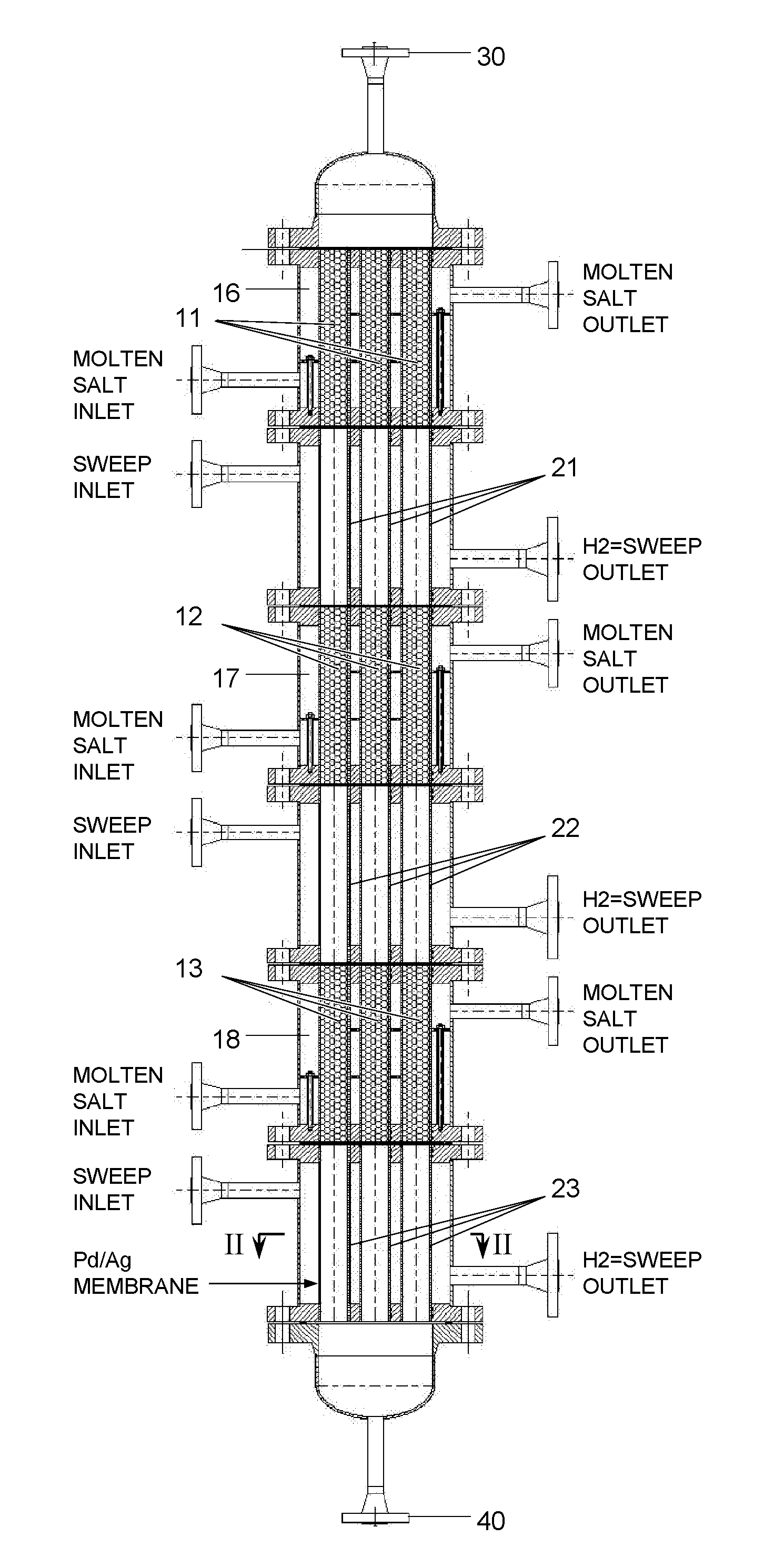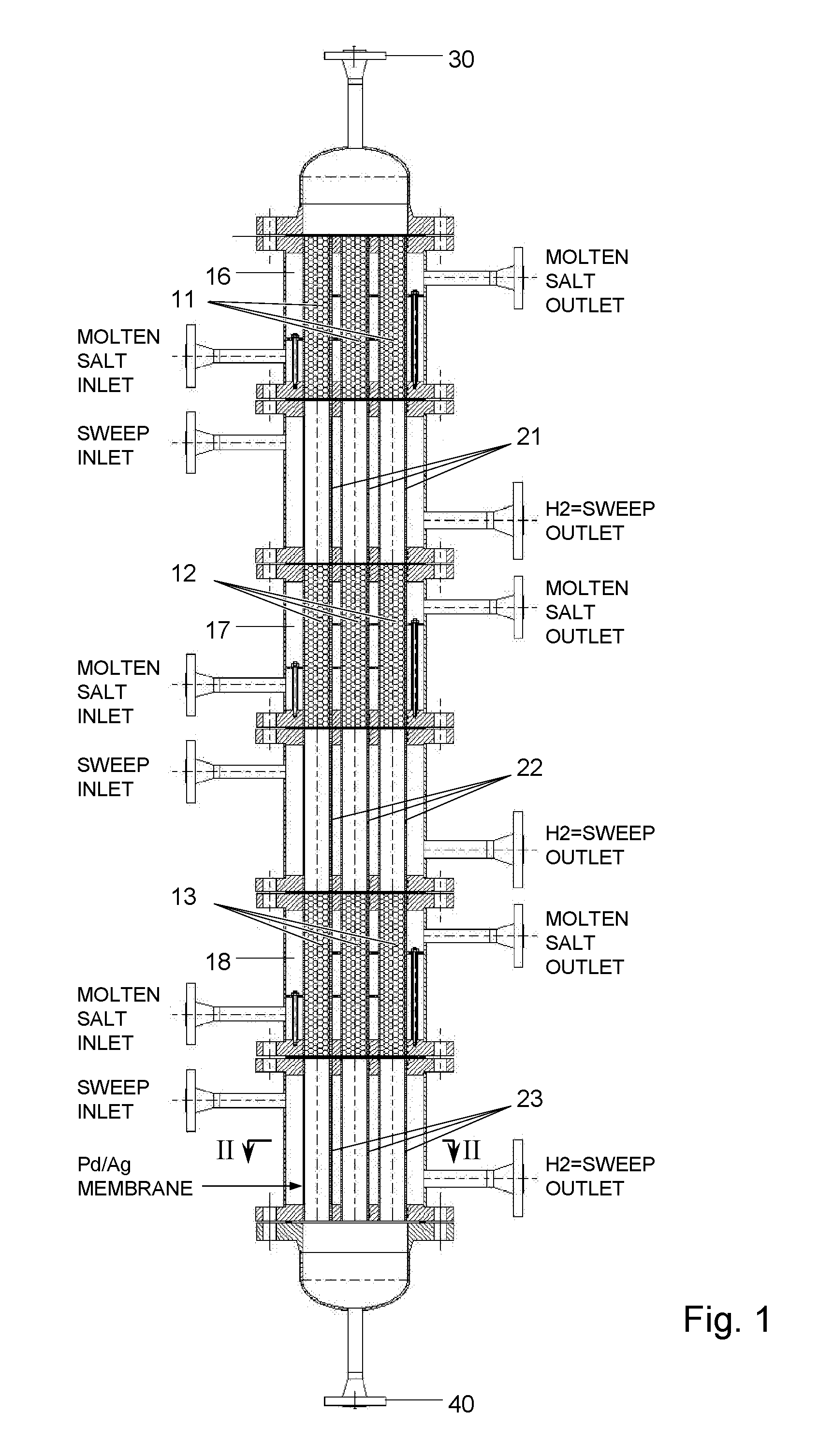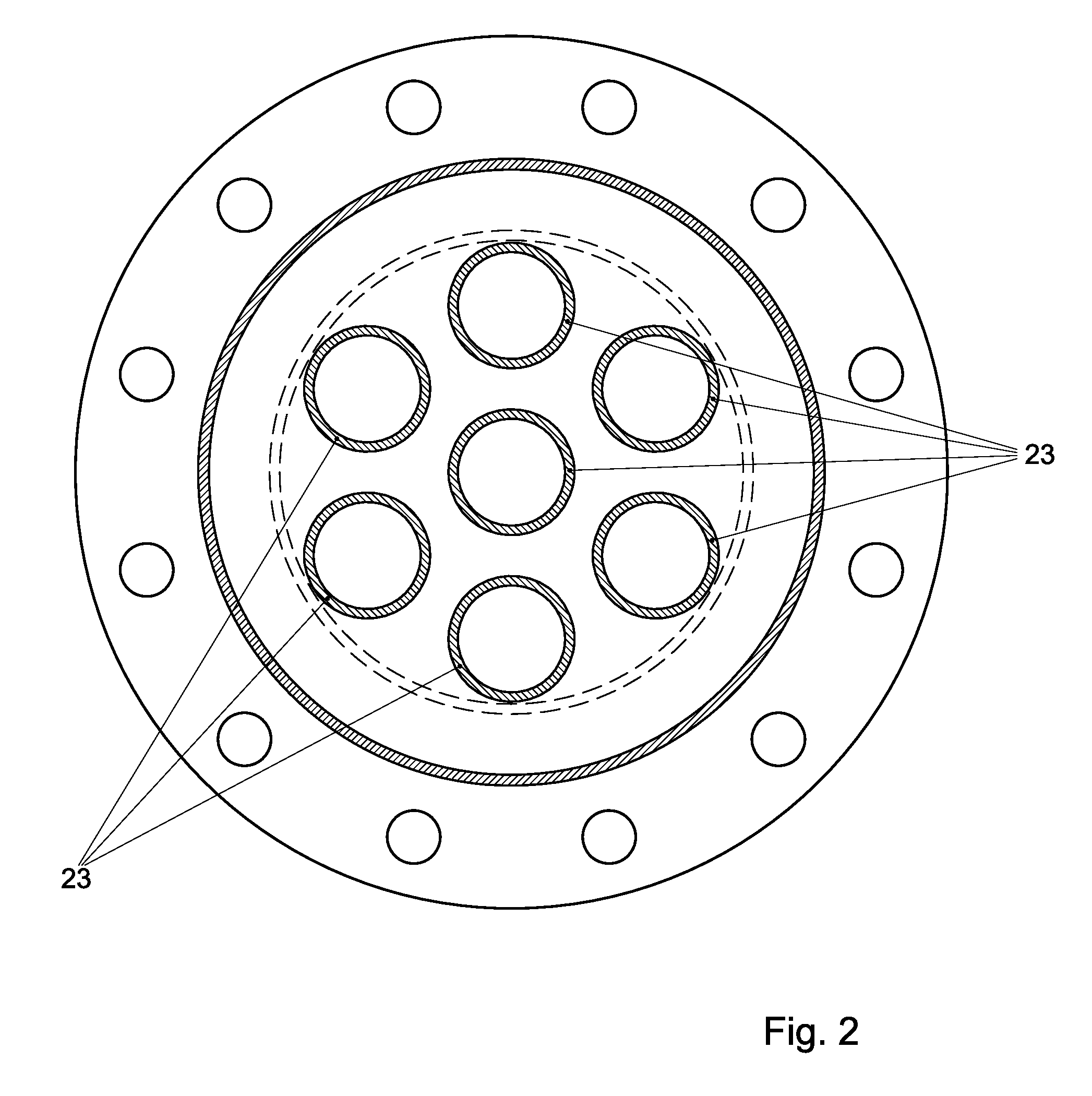Method and system for the production of hydrogen
a technology of hydrogen and production method, applied in the field of hydrogen production, can solve the problems of coke deposition, coke deposition, and quite complex geometries of the reactor system
- Summary
- Abstract
- Description
- Claims
- Application Information
AI Technical Summary
Benefits of technology
Problems solved by technology
Method used
Image
Examples
example
[0082]A simulated reactor to produce 5 Nm3 / h of pure hydrogen was developed to demonstrate the validity of this invention. The simulated reactor, as generally described in FIG. 1 consisted of 5 steps of reaction followed by H2 separation.
[0083]An overall feed conversion of almost 82.5% is reached at a reforming temperature of 530° C., a hydrogen removal factor (HRF) of 65% and a steam / carbon (S / C) ratio of 4. By increasing the S / C ratio conversely from what happens in a conventional steam reforming the overall absorbed duty does not significantly increase, meanwhile the feed conversion is strongly affected as it is possible to see in FIG. 4 where with an S / C of 5 a conversion of 92% is reached. Higher feed conversion may be reached by increasing also the number of steps or by operating at higher pressure. In such latest case the feed consumption per Nm3 / h of hydrogen produced is 2150 Kcal / Nm3 of hydrogen produced compared to 3000-3200 Kcal / Nm3 of hydrogen produced using conventional...
PUM
| Property | Measurement | Unit |
|---|---|---|
| pressure | aaaaa | aaaaa |
| temperature | aaaaa | aaaaa |
| temperature | aaaaa | aaaaa |
Abstract
Description
Claims
Application Information
 Login to View More
Login to View More - R&D
- Intellectual Property
- Life Sciences
- Materials
- Tech Scout
- Unparalleled Data Quality
- Higher Quality Content
- 60% Fewer Hallucinations
Browse by: Latest US Patents, China's latest patents, Technical Efficacy Thesaurus, Application Domain, Technology Topic, Popular Technical Reports.
© 2025 PatSnap. All rights reserved.Legal|Privacy policy|Modern Slavery Act Transparency Statement|Sitemap|About US| Contact US: help@patsnap.com



